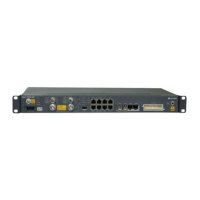Technical Manual
U-SYS MRS6100 Media Resource Server Chapter 4 Media Resource Function
Huawei Technologies Proprietary
4-1
Chapter 4 Media Resource Function
4.1 Collecting and Decoding the DTMF Signal
The MRS6100 can monitor the DTMF signal in the RTP voice payload or the RTP
payload in RFC2833 format.
The MRS6100 receives the DTMF signal from the DTMF phone under the control of
the AS or SoftSwitches. It recognizes the dialed number. Then, the MRS6100
converts the number into the related digits and encapsulates it in the signaling to
transfer it to the AS or SoftSwitch.
Based on the digit map delivered by the service logic, the MRS6100 receives the input
information. If the input digit sequence matches a digit template in the digit collecting
templates, the MRS6100 reports an event and the input data to the service logic. If the
digit sequence does not match any digit template in the digit map, this digit sequence
is invalid.
Also, the MRS6100 can receive the input information based on the special functional
keys delivered by the service logic. According to the definitions of the keys, the
MRS6100 interacts with the user.
4.2 Generating and Sending Signal Tones
The MRS6100 can recognize signal tone identifiers from the SoftSwitches or AS.
Then, it generates the related signal tones, such as dial tone or busy tone to the user.
These signal tones comply with the YDN 065-1997 specifications.
4.3 Sending Recorded Announcements
The MRS6100 plays the recorded announcements to the user in a specified voice
code format based on the requirements of the control device. The announcement
code can be G.711 A/u, G.729A, or G.723.1. The recorded announcements can be
loaded onto the boards of the MRS6100 or stored on the FTP server. Each MSU
board of the MRS6100 can load 200 MB audio files. The audio files on the server are
limited only by the space of the server.
In addition, the MRS6100 can play variable voices in a specified format. The voice
format and value are specified by the service logic.

